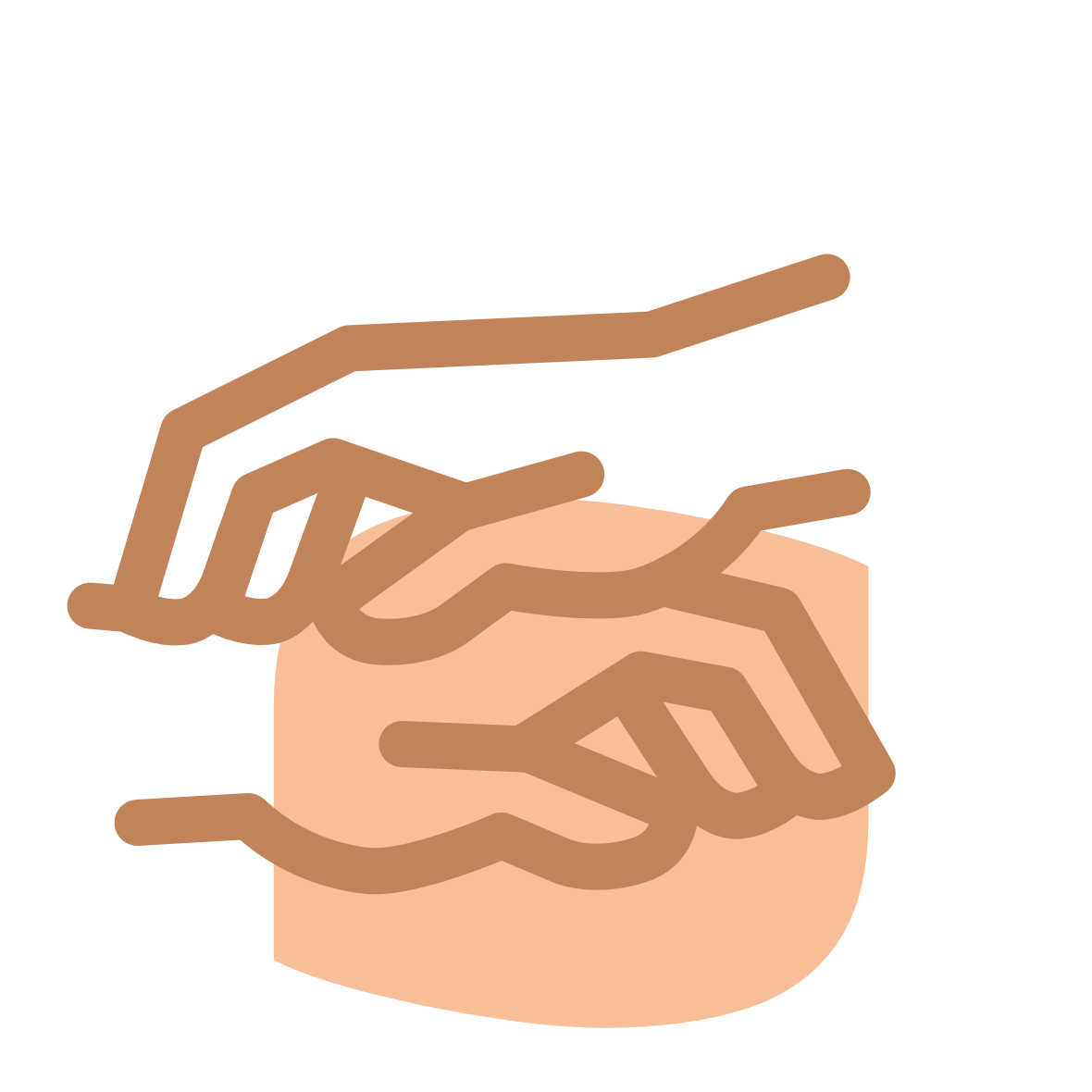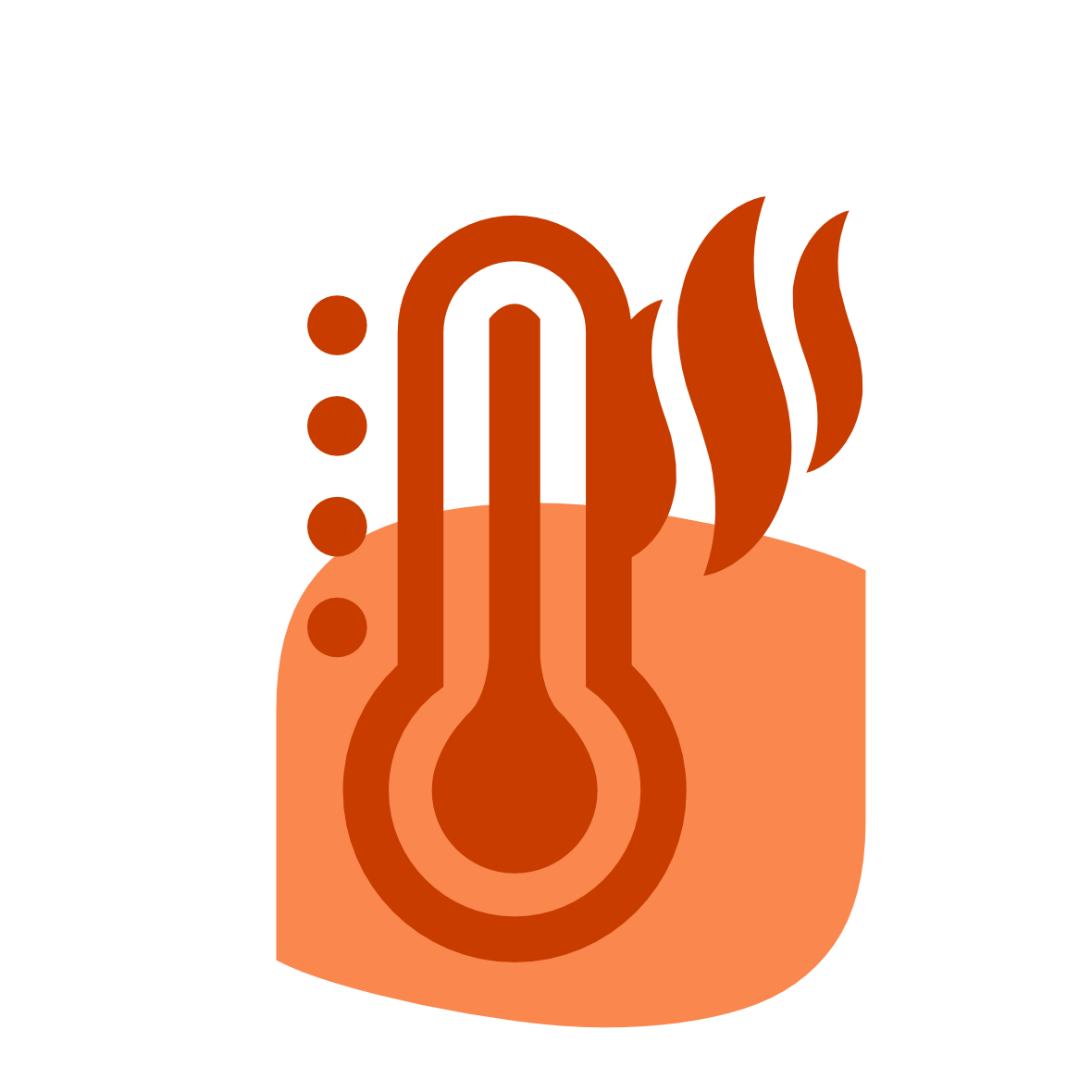What are the different forms of urticaria?
Basically, three different forms of urticaria can be named, which differ in terms of the triggers and the duration of the symptoms.

Trigger
With spontaneous urticaria, the symptoms develop without any apparent trigger. Wheals and angioedema appear spontaneously, out of the blue, seemingly when and where they want. Stress and heat can encourage development, but they are not absolutely necessary for symptoms to appear. | Duration
In most cases, urticaria only lasts for a few days or weeks and does not cause any problems. This is acute urticaria. |
Trigger
With spontaneous urticaria, the symptoms develop without any apparent trigger. Wheals and angioedema appear spontaneously, out of the blue, seemingly when and where they want. Stress and heat can encourage development, but they are not absolutely necessary for symptoms to appear. | Duration
Urticaria is much more difficult to bear when patients are affected for several months, years or even decades. Urticaria that lasts more than six weeks is referred to as chronic urticaria. |
Trigger
In the case of inducible urticaria, symptoms only occur when a specific trigger is present, e.g. in the case of cold urticaria, when the skin comes into contact with cold. | Duration
Urticaria is much more difficult to bear when patients are affected for several months, years or even decades. Urticaria that lasts more than six weeks is referred to as chronic urticaria. |
As of today, there are eight different inducible forms of urticaria, which are discussed in more detail below.
Forms of chronic inducible urticaria
 | Symptomatic dermographism (formerly known as urticaria factitia) is one of the most common inducible forms of urticaria. The triggering stimulus responsible for wheals appearing develops as a result of friction, scratching or chafing of the skin. Unlike other forms of urticaria, people affected with symptomatic dermographism often have itching before any wheals develop. Constant itching causes patients to scratch themselves. Scratching causes wheals, which in turn lead to itching. This vicious circle of itching and scratching makes symptomatic dermographism an extremely debilitating disease for many people affected. It is not uncommon for this form to occur in combination with chronic spontaneous urticaria or together with other forms of chronic inducible urticaria. Looking for a cause is not helpful for patients with symptomatic dermographism, as no one knows what causes it. However, determining the stimulus threshold is recommended. This is done using a dermographometer and is used to determine disease activity. |
 | Light urticaria, also known among experts as solar urticaria, is an inducible form. After a few minutes of sun exposure, the skin reacts and produces wheals, itching and redness, as if one had touched a stinging nettle. In rare cases, the symptoms only appear a few hours after light exposure. The symptoms are usually restricted to the area exposed to light. That means that skin that was completely protected from light remains symptom-free. Light clothing often does not completely block UV radiation or visible light, meaning that symptoms may also appear on covered parts of the body. If solar urticaria is present, light exposure over a large area, such as sunbathing on the beach or in a sunbed salon, can lead to eruptions all over the body, with sometimes life-threatening accompanying symptoms such as headache, breathing difficulties, drop in blood pressure and even loss of consciousness. |
 |
Cholinergic urticaria or “heat bumps” is when wheals, rarely also angioedema, are triggered by physical exertion. Other things that make you warm and are sweat-producing also cause symptoms, so for example a hot bath, eating very spicy foods or emotional stress. Cholinergic urticaria is not a rare disease and is one of the more common forms of urticaria. It particularly affects young people between the ages of 15 and 25. An exercise test, e.g. with an ergometer, is used to detect cholinergic urticaria. It is important to distinguish cholinergic urticaria from a possible exercise-induced anaphylaxis, which can also cause severe physical reactions with, for example, cardiovascular collapse. This form of anaphylaxis is one of the differential diagnoses of cholinergic urticaria. |
 | Heat urticaria is another form of chronic urticaria that, like cholinergic urticaria, has something to do with heat. However, in the case of heat urticaria, heat causes wheals to develop. So only the areas of the skin that have come into contact with heat (e.g. warm objects) are affected. That’s why it’s also known as “contact heat urticaria” or “localised heat urticaria”. Unlike cholinergic urticaria, heat urticaria occurs much less frequently. |
 | If swelling occurs after applying pressure to the skin, this may indicate pressure urticaria. Here, the symptoms only appear whenever pressure is applied to the skin. With these patients, swelling is typically triggered by mechanical stress (e. g. on the shoulder, when carrying a heavy bag) and then appears on these irritated areas. Swelling sits deeper in the skin than wheals and therefore tends to be skin-coloured. It is often to be found under taut skin on palms of the hands and soles of the feet and feels firm, but elastic at the same time. This swelling is usually associated with burning and pain rather than itching and occurs with a time delay, meaning that a diagnosis of pressure urticaria requires special provocation tests. |
 | With this form of urticaria, wheals and itching are triggered by the physical stimulus of cold. It seems as if the person affected is allergic to the cold. However, it is not an allergy, but what is known as cold urticaria, which occurs whenever the skin comes into contact with cold air or cold objects (e.g. ice, snow or ice cubes). There is a risk of symptoms also affecting the lining of the mouth after contact with a cold stimulus, which can cause swelling in the mouth and throat area and lead to danger of suffocation. If the entire body comes into contact with cold water, this can even cause shock reactions. For those affected with cold urticaria, it is therefore extremely important to know at what temperature they can expect wheals to appear. This is where a cold threshold test is helpful. |
 | There are very few people who are affected by aquagenic urticaria (triggered by water). It is also not always recognized and is occasionally mistaken for heat or cold urticaria because it occurs after contact with hot or cold water. To date, it is not clear how or why contact with water causes wheals and itching in patients with aquagenic urticaria. Aquagenic urticaria, like other forms of chronic inducible urticaria, is treated with a non-tiring antihistamine, in higher doses if necessary. Avoidance of the trigger is not possible in this form of urticaria. |
 | Vibration-induced urticaria: There are very few people who are affected by vibration-induced urticaria (triggered by vibrations). This inducible form is characterized mainly by the development of angioedema, which can occur when using a lawn mower or jackhammer, among other things. Rarely, wheals occur. |




